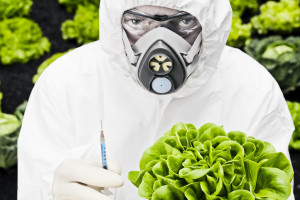GMO Myths and Truths

Genetically modified (GM) crops are promoted on the basis of a range of far-reaching claims from the GM crop industry and its supporters.
They say that GM crops:
- Are an extension of natural breeding and do not pose different risks from naturally bred crops
- Are safe to eat and can be more nutritious than naturally bred crops
- Are strictly regulated for safety
- Increase crop yields
- Reduce pesticide use
- Benefit farmers and make their lives easier
- Bring economic benefits
- Benefit the environment
- Can help solve problems caused by climate change
- Reduce energy use
- Will help feed the world.
 However, a large and growing body of scientific and other authoritative evidence shows that these claims are not true. On the contrary, evidence presented in this report indicates that GM crops:
However, a large and growing body of scientific and other authoritative evidence shows that these claims are not true. On the contrary, evidence presented in this report indicates that GM crops:
- Are laboratory-made, using technology that is totally different from natural breeding methods, and pose different risks from non-GM crops
- Can be toxic, allergenic or less nutritious than their natural counterparts
- Are not adequately regulated to ensure safety
- Do not increase yield potential
- Do not reduce pesticide use but increase it
- Create serious problems for farmers, including herbicide-tolerant “superweeds”, compromised soil quality, and increased disease susceptibility in crops
- Have mixed economic effects
- Harm soil quality, disrupt ecosystems, and reduce biodiversity
- Do not offer effective solutions to climate change
- Are as energy-hungry as any other chemically-farmed crops
- Cannot solve the problem of world hunger but distract from its real causes – poverty, lack of access to food and, increasingly, lack of access to land to grow it on.
 Based on the evidence presented in this report, there is no need to take risks with GM crops when effective, readily available, and sustainable solutions to the problems that GM technology is claimed to address already exist.
Based on the evidence presented in this report, there is no need to take risks with GM crops when effective, readily available, and sustainable solutions to the problems that GM technology is claimed to address already exist.
Conventional plant breeding, in some cases helped by safe modern technologies like gene mapping and marker assisted selection, continues to outperform GM in producing high-yield, drought-tolerant, and pest- and disease-resistant crops that can meet our present and future food needs.
Download a PDF of the full GMO Myths and Truths report

